|
Books Should Be Free Loyal Books Free Public Domain Audiobooks & eBook Downloads |
|
|
Books Should Be Free Loyal Books Free Public Domain Audiobooks & eBook Downloads |
|
Books of Memoirs |
|---|
|
Book type:
Sort by:
View by:
|
By: Charles Todd Quintard (1824-1898) | |
|---|---|
 Doctor Quintard, Chaplain C.S.A. And Second Bishop Of Tennessee Being His Story Of The War (1861-1865)
Doctor Quintard, Chaplain C.S.A. And Second Bishop Of Tennessee Being His Story Of The War (1861-1865)
Charles Quintard was an Episcopal priest who, in spite of his pro-Union stance, volunteered to be a chaplain in the Confederate army in the American Civil War. A sympathetic, warm, intellectual man loved by soldier and civilian alike, he volunteered because he felt that the soldiers from his local area needed him more than his local parish. Within four months of the end of the war, he was elected bishop of the Episcopal Diocese of Tennessee, an election ratified by the Episcopal Church's General Convention in October... | |
By: Charlie Chaplin (1889-1977) | |
|---|---|
 My Trip Abroad
My Trip Abroad
"A steak and kidney pie, influenza and a cablegram. There is the triple alliance that is responsible for the whole thing." So begins Charlie Chaplin's My Trip Abroad, a travel memoir charting the actor-director's semi-spontaneous visit to Europe. Fresh off the success of 1921's The Kid, Chaplin decides to "play hookey" after his seven year stay in Hollywood. He return to his native Europe as an international superstar, beloved by fans and hounded by reporters. The "triple alliance" of the book's opening line sends Chaplin on an whirlwind tour through Great Britain, Germany, and France -- and the results are both funny and insightful... | |
By: Charlotte Perkins Gilman (1860-1935) | |
|---|---|
 Benigna Machiavelli
Benigna Machiavelli
In between "The Yellow Wallpaper" and Herland , feminist Charlotte Perkins Gilman wrote and published this delightful fictional autobiography, Benigna Machiavelli , in her monthly magazine, The Forerunner. The narrator, young Benigna MacAvelly, decides as a child that she intends to emulate her ancestor Niccolò Machiavelli but dedicate her machinations to doing good rather than evil. She starts her ingenious plotting very early in life , and moves on to larger goals as she gets older. Her most significant challenge is her domineering father... | |
By: Christopher Morley (1890-1957) | |
|---|---|
 Religio Journalistici
Religio Journalistici
The great Canadian journalist and humorist ruminates and reflects upon his life and calling in this 1924 little gem. - Summary by david wales | |
By: Christy Mathewson (1880-1925) | |
|---|---|
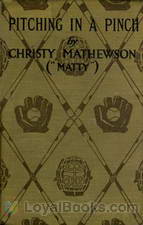 Pitching in a Pinch
Pitching in a Pinch
In this book Mathewson is telling the reader of the game as it is played in the Big Leagues.... It’s as good as his pitching and some exciting things have happened in the Big Leagues, stories that never found their way into the newspapers. Matty has told them. This is a true tale of Big Leaguers, their habits and their methods of playing the game, written by one of them. | |
By: Clarence King (1842-1901) | |
|---|---|
 Mountaineering in the Sierra Nevada
Mountaineering in the Sierra Nevada
"Mountaineering in the Sierra Nevada" is a memoir by Clarence King of his adventures and work with the California Geological Survey. King later led a major survey along the 40th Parallel in the American West and then was appointed the first director of the new U.S. Geological Survey.King's 1872 "Mountaineering in the Sierra Nevada" exhibits a modern sense of timing and insight, and his accounts of hand-and-foot rock climbing seem as fresh as last week's blog post. He was part of the Victorian wave... | |
By: Cole Younger (1844-1916) | |
|---|---|
 Story of Cole Younger, by Himself
Story of Cole Younger, by Himself
Autobiography of Cole Younger, American Civil War veteran and member of the Jesse James gang. Cole Younger was a member of Quantrill's Raiders during the Civil War and along with his brother, Jim Younger and the James brothers, robbed banks and trains during the 1870's. | |
By: Con Price (1869-1958) | |
|---|---|
 Memories of Old Montana
Memories of Old Montana
Con Price recalls the 1870s through the 1940s, growing up in Iowa and South Dakota before heading out on a cattle drive into Montana. Never dull, his life was full of experiences from cattle drives to Indian encounters to cattle wars to frontier romance. - Summary by Gary Clayton | |
By: Cornelia Stratton Parker (1885-?) | |
|---|---|
 American Idyll: The Life of Carlton H. Parker
American Idyll: The Life of Carlton H. Parker
In a memoir marked by joy, love, and an unbending sense of adventure, Cornelia Stratton Parker reveals the heart of a unique man and their life together. As a member of California's turn-of-the-20th-century Immigration and Housing Commission, Carlton H. Parker came to understand the problems surrounding migrant camps and the labor movement in general. In this volume she recounts his undertakings in that regard and their family life. | |
By: Dame Shirley (d.1906) | |
|---|---|
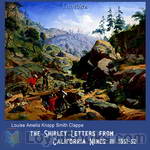 The Shirley Letters from California Mines in 1851-52
The Shirley Letters from California Mines in 1851-52
Louise Amelia Knapp Smith Clappe moved to California from Massachusetts during the Gold Rush of the mid-1800’s. During her travels, Louise was offered the opportunity to write for The Herald about her travel adventures. It was at this point that Louise chose the name “Shirley” as her pen name. Dame Shirley wrote a series of 23 letters to her sister Mary Jane (also known as Molly) in Massachusetts in 1851 and 1852. The “Shirley Letters”, as the collected whole later became known, gave true accounts of life in two gold mining camps on the Feather River in the 1850s... | |
By: Dillon Wallace (1863-1939) | |
|---|---|
 The Lure of the Labrador Wild
The Lure of the Labrador Wild
The Lure Of The Labrador Wild is a account of a expedition by Leonidas Hubbard, an adventurer and journalist to canoe the system Naskaupi River - Lake Michikamau in Labrador and George River in Quebec. His companions on this journey were his friend, New York lawyer Dillon Wallace and an Indian guide from Missannabie, George Elson. From the start, the expedition was beset with mistakes and problems. Instead of ascending the Naskaupi River, by mistake they followed the shallow Susan Brook. After hard long portaging and almost reaching Lake Michikamau, with food supplies running out, on September 15 at Windbound lake, they decided to turn back... | |
By: Donald Shaw | |
|---|---|
 Eighteen Months' Imprisonment
Eighteen Months' Imprisonment
This is an absorbing memoir of an inmate's experiences and impressions while in a London prison. He describes himself as "a man of education and worldly experience" and weighing "19 stone 13 lbs" (279 lbs), a stone being 14 lbs, at the beginning of his imprisonment but not upon his release. The author writes with a reporter's keen perception and a talented novelist's ability to engage and at times amuse the reader. | |
By: Doris Stevens (1892-1963) | |
|---|---|
 Jailed for Freedom
Jailed for Freedom
A first-hand account of the 1913-1919 campaign of American suffragists, detailing their treatment at the hands of the courts, and the true conditions of their incarceration. | |
By: Dorothy Osborne (1627-1695) | |
|---|---|
 Love Letters of Dorothy Osborne
Love Letters of Dorothy Osborne
A lively, interesting and important collection of 17th century love-letters written by an English lady, against the background of the Civil War and the Restoration | |
By: Dreiser, Theodore (1871-1945) | |
|---|---|
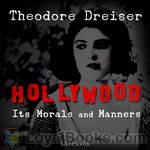 Hollywood: Its Morals and Manners
Hollywood: Its Morals and Manners
Serialized in Shadowland from November 1921 to February 1922, Hollywood: Its Morals and Manners is Theodore Dreiser's shocking four part expose on the motion picture industry. In it, he shares his observations from his extended stay in Los Angeles, and gives us an intimate look at the seedier underside of Hollywood. | |
By: Eddie Rickenbacker (1890-1973) | |
|---|---|
 Fighting the Flying Circus
Fighting the Flying Circus
This is the WWI memoirs of Medal of Honor winner, Capt Eddie Rickenbacker. He fought in and eventually became commander of the 94th "Hat-in-the-Ring" Squadron, which ended the war with the highest number of air victories of any American squadron. The circus mentioned in the title refers to the German squadron commanded by the famous Red Baron, Manfred von Richthofen. (Introduction by Brett W. Downey) | |
By: Edith Nesbit (1858-1924) | |
|---|---|
 My School Days
My School Days
A short memoir about the author's school days, serialised in The Girl's Own Paper from October 1896 to September 1897. It includes stories about teachers, fellow pupils, the things that scared her most as a child (and even as an adult) and a vivid account of the best summer of her childhood.Summary by Cori Samuel. | |
By: Edith Wharton (1862-1937) | |
|---|---|
 Fighting France, from Dunkerque to Belfort
Fighting France, from Dunkerque to Belfort
American novelist Edith Wharton was living in Paris when World War I broke out in 1914. She obtained permission to visit sites behind the lines, including hospitals, ravaged villages, and trenches. Fighting France records her travels along the front in 1914 and 1915, and celebrates the indomitable spirit of the French people. | |
By: Edmund Gosse (1849-1928) | |
|---|---|
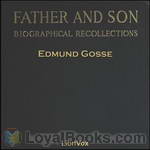 Father and Son
Father and Son
Father and Son (1907) is a memoir by poet and critic Edmund Gosse, which he subtitled “a study of two temperaments.” The book describes Edmund’s early years in an exceptionally devout Plymouth Brethren home. His mother, who dies early and painfully of breast cancer, is a writer of Christian tracts. His father, Philip Henry Gosse, is an influential, though largely self-taught, invertebrate zoologist and student of marine biology who, after his wife’s death, takes Edmund to live in Devon... | |
By: Edna Brush Perkins (1880-1930) | |
|---|---|
 The White Heart of Mojave
The White Heart of Mojave
"The White Heart of the Mojave" recounts a 1920's adventure "in the wind and sun and big spaces" of Death Valley by two independent minded women, Edna Brush Perkins and Charlotte Hannahs Jordan. Both women were early feminists, Edna as chairwoman of the greater Cleveland Woman's Suffrage Party (1916-18). At the end of the Great War, the two friends wanted nothing more than to escape "to the solitariness of some wild and lonely place far from city halls, smokestacks, national organizations, and streets of little houses all alike... | |
By: Edward Carpenter (1844-1929) | |
|---|---|
 My Days and Dreams
My Days and Dreams
Hard to imagine now, but there have been times and places where just wearing sandals could get you labeled as being in rebellion against established society. Two such places were Berkeley, California in the early 1960s and Millthorpe, England in the 1880s. Millthorpe was home to Edward Carpenter (1844-1929), an English socialist poet, philosopher, and activist who abandoned his upper crust life and university sinecure to grow market vegetables and handcraft sandals for a living. Carpenter’s search for the well-lived life, his passions and concerns resonate uncannily with the mood of long ago Berkeley... | |
 Days with Walt Whitman
Days with Walt Whitman
"Days with Walt Whitman" is a contemplative summary of the life of Walt Whitman and the making of the poet, by one of his followers. Edward Carpenter collected a half dozen essays he had written about different aspects of the American poet's work and habits. The essays have an ecstatic but grounded style, elevating Whitman to immortality, and showcasing Carpenter's familiarity with ancient Sanskrit texts. - Summary by Czandra | |
By: Edward Streeter (1891-1976) | |
|---|---|
 Dere Mable
Dere Mable
Bill is in training camp, preparing to go off to World War I. This book is a collection of love letters written to his sweetheart, Mable. The letters are humorous, mis-spelled, and have many stories of life in an army camp – all from Bill’s unique perspective. | |
By: Egerton Castle (1858-1920) | |
|---|---|
 Pride of Jennico
Pride of Jennico
"The death of a patriarch, unexpected inheritance of a second son, dark and stormy castle, faithful retainers, scary governess who never speaks, star-crossed lovers -- I could go on, but that would involve spoilers! All you'd want and expect from a Gothic romance. One more thing -- real men do cry!" | |
By: Eliza P. Donner Houghton (1843-1922) | |
|---|---|
 The Expedition of the Donner Party and Its Tragic Fate
The Expedition of the Donner Party and Its Tragic Fate
The Donner Party was a group of California-bound American settlers caught up in the “westering fever” of the 1840s. After becoming snowbound in the Sierra Nevada in the winter of 1846–1847, some of the emigrants resorted to cannibalism. Although this aspect of the tragedy has become synonymous with the Donner Party in the popular imagination, it actually was a minor part of the episode. The author was about 4 at the time. The first part of the book accounts the tragic journey and rescue attempts; the last half are reminiscences of the child orphan, passed from family to family while growing up. | |
By: Elizabeth Bacon Custer (1842-1933) | |
|---|---|
 Boots and Saddles
Boots and Saddles
Elizabeth Custer has penned an engaging portrait of 1870’s life on a U.S. cavalry post in the Dakotas, just before her husband and his troops met their tragic deaths in the Battle of the Little Big Horn. “Our life,” she writes, “was often as separate from the rest of the world as if we had been living on an island in the ocean.” Her portrait of her husband, General George Armstrong Custer is laudatory—his intellect, his love of dogs (he kept a hunting pack of 40 at the post); but, Boots and Saddles is more than just a memorial... | |
By: Elizabeth Burgoyne Corbett (1846-1930) | |
|---|---|
 Adventures of an Ugly Girl
Adventures of an Ugly Girl
“Come, Dora! I shall never be ready, if you don’t make haste. They will be here in ten minutes, and my hair is not half so nice as it ought to be, thanks to your carelessness.” “You are very good to ignore my own claims to attention so utterly. I have been helping you this half-hour and have barely time enough left to change my frock. To make my own hair presentable is impossible now.” “Why, what does it matter how your hair is dressed, or what sort of a gown you put on? You may just as well spare your pains, for unfortunately nothing that you can do seems to mitigate your ugliness... | |
By: Elizabeth Cady Stanton (1815-1902) | |
|---|---|
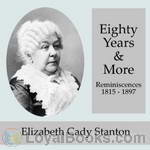 Eighty Years and More; Reminiscences 1815-1897
Eighty Years and More; Reminiscences 1815-1897
Elizabeth Cady Stanton was one of the premier movers in the original women’s rights movement, along with Susan B. Anthony, her best friend for over 50 years. While Elizabeth initially stayed home with her husband and many babies and wrote the speeches, Susan went on the road to bring the message of the women’s rights movement to an often hostile public. When black men were given the vote in 1870, Susan and Elizabeth led the women’s rights establishment of the time to withhold support for a bill that would extend to black men the rights still denied for women of all colors... | |
By: Elizabeth Gaskell (1810-1865) | |
|---|---|
 My Lady Ludlow
My Lady Ludlow
This novella by the acclaimed Elizabeth Gaskell follows the reminiscences and life of aristocratic Lady Ludlow, told through the eyes of one of her charges, the young Margaret Dawson. Lady Ludlow epitomizes the unwillingness of the old English gentry to accept the progression of social reform and technology, such as education for the poor and religious leniency. She reminisces about her friends in the French revolution and tries to protect and guide the numerous young ladies she has taken under her care. | |
By: Elizabeth Gertrude Stern (1889-1954) | |
|---|---|
 My Mother and I
My Mother and I
Elizabeth Stern was two and a half years old, when her family emigrated from Poland to Pittsburgh. My Mother and I is the story of Stern's Americanization and how it ultimately alienated her from her parents. Stern's father had been a small village rabbi. Strict and traditional in his views, he sends Elizabeth to learn Hebrew at age four, so she can fulfill her destiny "as the wife of a rabbi or scholar," but he opposes letting her attend high school. Stern's mother tries fitfully to pry open doors for her daughter... | |
By: Elizabeth Keckley (1818-1907) | |
|---|---|
 Behind the Scenes
Behind the Scenes
This is the autobiography of Elizabeth Keckley, a former slave who bought her freedom with the money she earned as a seamstress. She eventually worked for Mary Lincoln. It is a fascinating book, filled with many recollections of her own life and her interactions with the Lincolns and other members of the government elite. | |
By: Elizabeth L. Banks (1865-1938) | |
|---|---|
 Campaigns of Curiosity: Journalistic Adventures of an American Girl in London
Campaigns of Curiosity: Journalistic Adventures of an American Girl in London
Elizabeth Banks was an American journalist who, at about age 23, moved to London. While trying to break into English journalism and to keep the wolf from the door, she struck upon the idea of hiring out as a housemaid in some London household and writing about her experiences. Subsequently, she became a street sweeper, flower-seller, and a laundress. On the flip side, she advertised as an heiress and demonstrated how easy it was for a wealthy American to "buy a pedigree" and entry into the higher social circles... | |
 Autobiography of a "Newspaper Girl"
Autobiography of a "Newspaper Girl"
Elizabeth Banks was an American journalist and author. She grew up in Wisconsin, then lived in England the last forty years of her life. She became a regular contributor to English publications such as The Daily News, Punch, St James' Gazette, and London Illustrated. She created a sensation by recording her observations on the plight of the lower classes, which she researched posing as a housemaid, street sweeper, and Covent Garden flower girl. Her later journalistic writings promoted women's right to vote and denounced prison conditions for jailed suffragettes... | |
By: Ellen Craft (1826-1891) | |
|---|---|
 Running a Thousand Miles for Freedom
Running a Thousand Miles for Freedom
Ellen and William Craft were a married couple who escaped from slavery in 1848 when Ellen disguised herself as a white, literate man and William pretended to be an accompanying slave. This is their story of their escape to freedom.NB Listeners may find some scenes of abuse and vocabulary in this book distressing. | |
By: Emily Ponsonby (1817-1877) | |
|---|---|
 Violet Osborne - Trilogy
Violet Osborne - Trilogy
"This book is in turns funny and sad. Violet Osborne is a very beloved child with no financial problems. She is both beautiful and good, and of course she must be happy. Yet, as we learn, she is a manipulative and overbearing woman who would do anything to get her way. This book tells us about her life as a girl, and takes us through her marriage and motherhood. It is a pleasant read, as the book is so witty and charming and the descriptions are very realistic". Summary by Stav Nisser. | |
By: Ernest Oldmeadow (1867-1949) | |
|---|---|
 Susan
Susan
Susan is a perfect gem of a maid until suddenly she begins to mess things ups and is so distracted that her mistress Gertrude is determined to find out what is bothering her. After much prodding Susan confesses that she has had a marriage proposal by letter from a Lord Ruddington whom she has never met. Should she accept?? Things get a little complicated as we follow this delightful story which unfolds in diary form written by Miss Gertrude. It will make you smile and sometimes laugh out loud. Enjoy! - Summary by Celine Major | |
By: Evans, A. J. (1889-1960) | |
|---|---|
 The Escaping Club
The Escaping Club
Described by some as one of the greatest escape books published. The Escaping Club recounts Evans' escape to Switzerland from a supposedly "escape-proof" German prison camp during World War I. After repatriation and rejoining the war, Evans again finds himself captured, this time first by Arabs and then by Turks. He again manages to escape. A detailed look at the trials faced by Allied POWs during World War I. | |
By: Ezra Meeker (1830-1928) | |
|---|---|
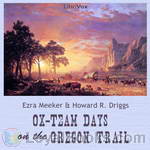 Ox-Team Days on the Oregon Trail
Ox-Team Days on the Oregon Trail
Ezra Meeker…was an early pioneer who traveled the Oregon Trail by ox cart as a young man. Beginning in his 70s, he worked tirelessly to memorialize the trail, repeatedly retracing the trip of his youth. This book is a memoir of those days. | |
By: Fa'iz El-Ghusein (1883-1968) | |
|---|---|
 Martyred Armenia
Martyred Armenia
This is a first hand account of the Armenian Genocide written by a Syrian who had been a Turkish official for three and a half years. His accounts tell of the worst of humanity, and also of the noblest. The noble include families who courageously support each other in the face of death, and Turks who refuse to follow orders to kill, knowing that they shall be executed themselves for their defiance. | |
By: Fanny Loviot | |
|---|---|
 Lady's Captivity among Chinese Pirates in the Chinese Seas
Lady's Captivity among Chinese Pirates in the Chinese Seas
This thrilling narrative recounts the true story of Fanny Loviot, a wealthy, young French girl who was kidnapped at sea. After setting sail for California in 1855, Fanny's boat was overtaken by Chinese pirates who held her hostage and demanded a ransom. This personal account follows her trying time in captivity, as well as her dramatic rescue by British authorities. | |
By: Father John Gerard (1564-1637) | |
|---|---|
 During the Persecution: Autobiography of Father John Gerard
During the Persecution: Autobiography of Father John Gerard
Fr. John Gerard was an English Jesuit priest who operated covertly in England during the Elizabethan era, during which the Catholic Church was subject to persecution. Gerard notably not only successfully hid from the English authorities for eight years before his capture but also endured extensive torture, escaped from the Tower of London, recovered and continued with his covert mission. After his escape to the Continent, he was instructed by his Jesuit superiors to write a book about his life... | |
By: Ferdinand de Lesseps (1805-1894) | |
|---|---|
 History of the Suez Canal
History of the Suez Canal
A lively picture of the origin and completion of the Suez Canal and his architect, Vicomte de Lesseps. This is the translation of a lecture given before the Societe de Gens Lettres in Paris, in April 1870 by de Lesseps himself. | |
By: Ferdinand Ossendowski (1876-1945) | |
|---|---|
 Beasts, Men and Gods
Beasts, Men and Gods
“Beasts, Men and Gods” is an account of an epic journey, filled with perils and narrow escapes, in the mold of “The Lord of the Rings.”The difference is: it’s all true.Ferdinand Ossendowski was a Pole who found himself in Siberia and on the losing side during the Bolshevik Revolution. To escape being rounded up and shot, he set out with a friend to reach the Pacific, there to take ship back to Europe. During his journey he fell in with dozens of other military men who shared the same objective… but nearly every one of them perished on the way... | |
By: Flavius Philostratus | |
|---|---|
 The Life of Apollonius of Tyana
The Life of Apollonius of Tyana
Apollonius of Tyana (ca. 40-120 AD) was a Greek Pythagorean philosopher and teacher. He hailed from the town of Tyana in the Roman province of Cappadocia in Asia Minor. His date of birth is a matter of conjecture as some say he was roughly a contemporary of Jesus.After Apollonius' death his name remained famous among philosophers and occultists. In a "novelistic invention" inserted in the Historia Augusta, Aurelian, at the siege of Tyana in 272, was said to have experienced a visionary dream in which Aurelian claimed to have seen Apollonius speak to him, beseeching him to spare the city of his birth... | |
By: Flora Sandes (1876-1956) | |
|---|---|
 English Woman-Sergeant in the Serbian Army
English Woman-Sergeant in the Serbian Army
Flora Sandes was the only British woman officially to serve as a soldier in World War I. Initially a St. John Ambulance volunteer, she traveled to Serbia, where, in the confusion of war, she was formally enrolled in the Serbian army. While the Serbian Army was regrouping in Corfu, Ms. Sandes returned to England to recuperate and publish these memoirs. | |
By: Florence A. Merriam (1863-1948) | |
|---|---|
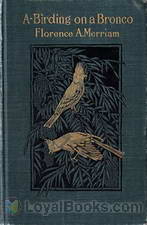 A-Birding on a Bronco
A-Birding on a Bronco
Florence Augusta Merriam Bailey (August 8, 1863 - September 22, 1948) was an American ornithologist and nature writer. She started observing bird behavior at a time when most bird study was based on collections and skins. By 1885, she began to write articles focusing on protecting birds. Her introduction of a birdwatching field guide, aimed at living birds, is considered the first in the tradition of modern bird guides. She wrote the first of these at the age of 26, initially as a series of notes in the Audubon Magazine and later as books. In "A-Birding on a Bronco," she writes an engaging memoir about her several trips to study birds on a ranch in California in the late 1800's. | |
By: Ford Madox Ford (1873-1939) | |
|---|---|
 Joseph Conrad: A Personal Remembrance
Joseph Conrad: A Personal Remembrance
Joseph Conrad was a Polish-British writer regarded as one of the greatest novelists to write in the English language. Though he did not speak English fluently until his twenties, he was a master prose stylist who brought a non-English sensibility into English literature. Conrad wrote stories and novels, many with a nautical setting, that depict trials of the human spirit in the midst of what he saw as an impassive, inscrutable universe. Conrad collaborated in some works with Ford Madox Ford. Ford was an English novelist, poet, critic and editor whose journals The English Review and The Transatlantic Review were instrumental in the development of early 20th-century English literature... | |
By: Forrest Crissey (1864-1943) | |
|---|---|
 Tattlings of a Retired Politician
Tattlings of a Retired Politician
"The letters of Hon. William Bradley, Ex-Governor and former veteran of practical politics, written to his friend and protege Ned who is still busy 'carving a career back in the old state.'" This is a novel filled with humorous political anecdotes by the main character, the Honorable William Bradley, told for the benefit of his protege, Ned. It conveys a sense of the ironic and humorous side of politics in Washington and back in their home state. | |
By: Frances E. Willard (1839-1898) | |
|---|---|
 Wheel Within A Wheel
Wheel Within A Wheel
Frances Willard was an influential campaigner and educator for social reforms, temperance and women's education, suffrage and empowerment, as shown in her motto "Do everything". She was a long-serving national president of the Woman's Christian Temperance Union and famous in many countries for her writings and speaking tours. This little book is a wryly humorous account of "How I Learned to Ride the Bicycle", something she achieved at the age of 53 and of which she was very proud! In it, she... | |
By: Frances M. A. Roe | |
|---|---|
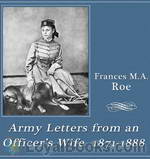 Army Letters from an Officer's Wife, 1871-1888
Army Letters from an Officer's Wife, 1871-1888
"There appeared from the bushes in front of me, and right in the path, two immense gray wolves . . . Rollo saw them and stopped instantly, giving deep sighs, preparing to snort, I knew . . . To give myself courage, I talked to the horse, slowly turning him around . . . when out of the bushes in front of us, there came a third wolf! The situation was not pleasant and without stopping to think, I said ‘Rollo, we must run him down - now do your best’ and taking a firm hold of the bridle, and bracing myself in the saddle, I struck the horse with my whip and gave an awful scream... | |
By: Frances Power Cobbe (1822-1904) | |
|---|---|
 Life of Frances Power Cobbe as Told by Herself
Life of Frances Power Cobbe as Told by Herself
Frances Power Cobbe was an important Irish-Anglo writer, suffragist, anti-vivisectionist, philosopher, and reformer of the mid to late 1800s. She is best known for her campaigns for women's rights , and against wife abuse and vivisection. She was the lifelong partner of Welsh sculptor Mary Lloyd. This autobiography was written very late in her life, and published shortly after her death. - Summary by Ciufi Galeazzi | |
By: Frances Ridley Havergal (1836-1879) | |
|---|---|
 Kept for the Master's Use
Kept for the Master's Use
The memoirs of Frances Ridley Havergal, a great missionary and hymn writer. | |
By: Frances Sheridan | |
|---|---|
 Memoirs of Miss Sidney Bidulph
Memoirs of Miss Sidney Bidulph
Sidney and Cecilia are best childhood friends who are forced to part for 5 years. In that interval, Sidney Bidulph - an undoubtedly good and dutiful woman - writes to her friend about everything: her marriage, her children, her other friendships and, above all, about her great love for Mr. Faulkland. In an amazing and unforgettable way, this book shows us that the road to happiness is not always clear - and that sometimes doing what seems to be right is not really the right thing to do. With Rachel's lovely reading, we see her - Sidney Bidulph - as she was meant to be, and as she really is. | |
By: Francis Archibald Bruton (1860-1929) | |
|---|---|
 Three Accounts of Peterloo
Three Accounts of Peterloo
A companion volume to F.A. Bruton's 'The Story of Peterloo', the full title of this short collection is 'Three Accounts of Peterloo by Eyewitnesses, Bishop Stanley, Lord Hylton, John Benjamin Smith with Bishop Stanley's Evidence at the Trial'. The three contemporary accounts, each with a short introduction by the editor, give different perspectives on the events of 16 August 1819, when a troop of Hussars accompanied by the local Yeomanry rode into a peaceful reform rally at St. Peter's Fields, Manchester, leaving 18 dead and more than 700 injured. | |
By: Francis Asbury (1745-1816) | |
|---|---|
 Journal of Francis Asbury, Volume I
Journal of Francis Asbury, Volume I
As one of the first two bishops of the Methodist church in America and one of the most well-known circuit riders during the spread of Methodism, Francis Asbury kept a journal of his travels and activities. His journal begins with his prayerful decision to come to America in 1771 and continues to December of 1815, a few months before his death. In the meantime, we travel with Rev. Asbury across the ocean, over mountains, through rivers, and up and down the whole length of the fledgling United States of America. - Summary by Devorah Allen | |
By: Francis Key Howard (1826-1872) | |
|---|---|
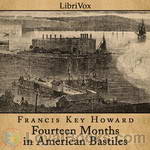 Fourteen Months in American Bastiles
Fourteen Months in American Bastiles
Francis Key Howard recounts in this book his life as a political prisoner of the United States. He points out that he was held captive at the same location where his grandfather was inspired to write the national anthem about the "land of the free," which makes a very stunning contrast. The sufferings that were imposed on him by the Union forces had the effect of solidifying his determination to resist unjust governmental dictates. (Introduction by Katie Riley) | |
By: François-René de Chateaubriand (1768-1848) | |
|---|---|
 Memoirs of Chateaubriand Volume V
Memoirs of Chateaubriand Volume V
The memoirs of Chateaubriand continue in Volume 5, with the author, now a grand hommes des lettres, still in the thick of political events, telling his story with his trademark acerbity and melancholy, interspersed with extracts from his voluminous correspondence with the literary, intellectual and political stars of his age. | |
 Memoirs of Chateaubriand Volume IV
Memoirs of Chateaubriand Volume IV
After the extinction of Napoleon's comet on St Helena, Chateaubriand covers the Bourbon Restoration in this volume, meeting a dazzling array of literary and political figures, as his diplomatic career advances. - Summary by Nicole Lee | |
 Memoirs of Chateaubriand 1768 to 1800
Memoirs of Chateaubriand 1768 to 1800
This is the first volume of Chateaubriand's Memoires d'Outre Tombe, in a Victorian translation. It covers the period from his birth, including the extraordinarily evocative childhood years and his travels in America, the source of some of his later writing, up to his return to France in 1800. Writer, politician and the father of French Romanticism, Chateaubriand lived close to the heart of the France's travails in the nineteenth century and engaged with them passionately. His frankness, fluency and the tumultuous times in which he lived make his Memoirs one of the enduring monuments of the art of autobiography. - Summary by Nicole Lee | |
 Memoirs of Chateaubriand Volume II
Memoirs of Chateaubriand Volume II
Volume II of Chateaubriand's Memoirs from Beyond the Tomb, translated by Teixeira de Mattos. This volume covers the period from his return to France to fight, reluctantly, for the King, his early literary successes with many portraits of the great and the good, including Napoleon, through to his travels in the Near East in the first decade of the 19th century, all through with his characteristic blend of mordant wit and melancholy. - Summary by Nicole Lee | |